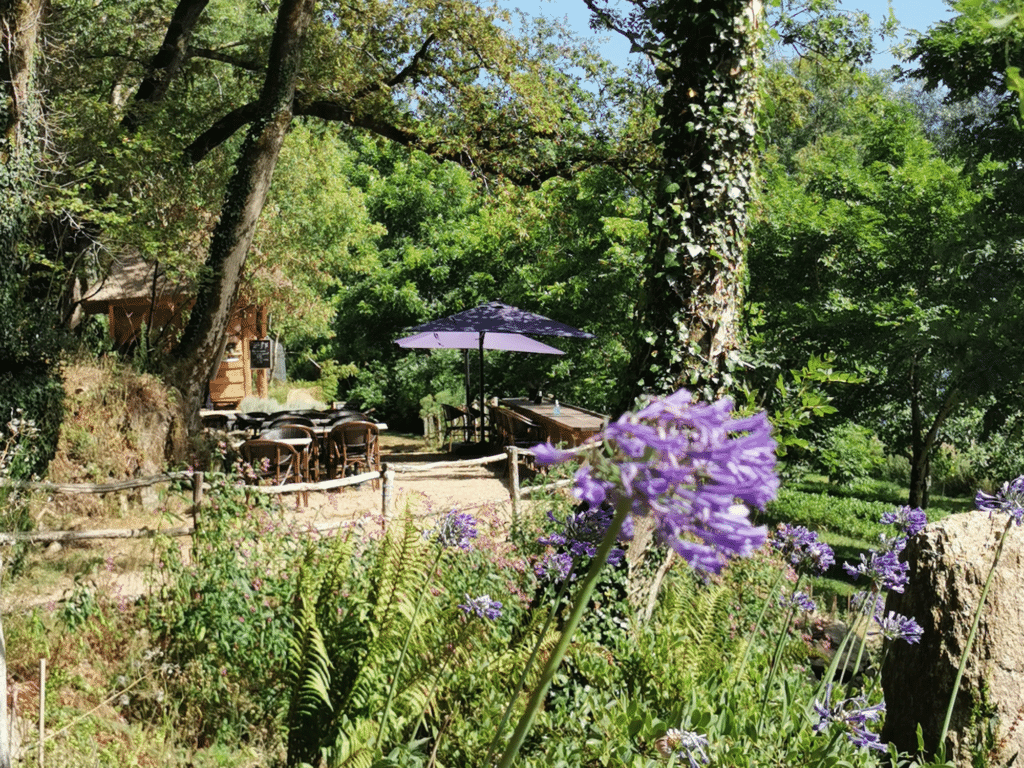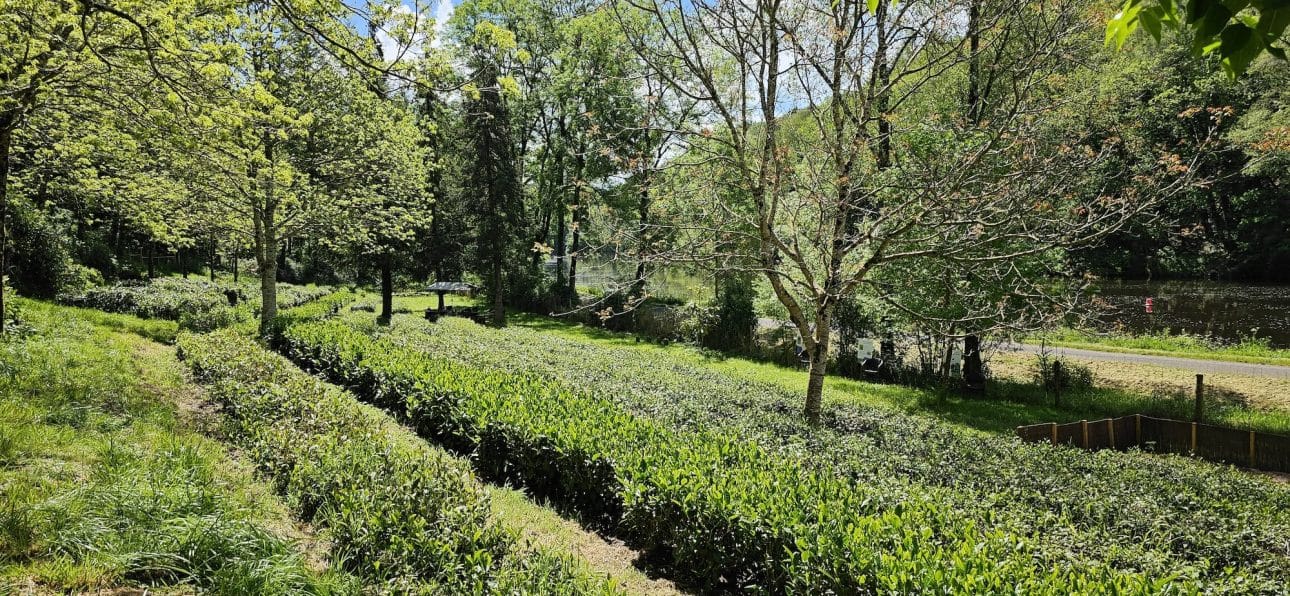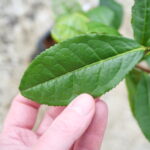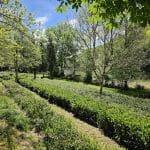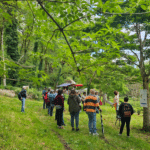Since 2006, in the heart of the Blavet Valley in Morbihan, Filleule des Fées has been growing premium organic tea from its own plantations.
Initially, the tea plantation consisted of just ten bushes – today, there are more than 30,000, spread over more than three hectares of land. A real tea garden (and a real gamble) in the heart of Brittany and its misty climate.
Camellia sinensis: what is it?
Camellia Sinensis, the scientific name of the tea plant, means Chinese camellia. The tea plant, or tea tree, is a shrub with perennial leaves that can reach several metres in height. It blooms in autumn with small, discreet flowers.
The leaves are eaten once plucked, processed and dried. Just-picked leaves have no particular flavour: it’s the processing that allows them to express themselves.
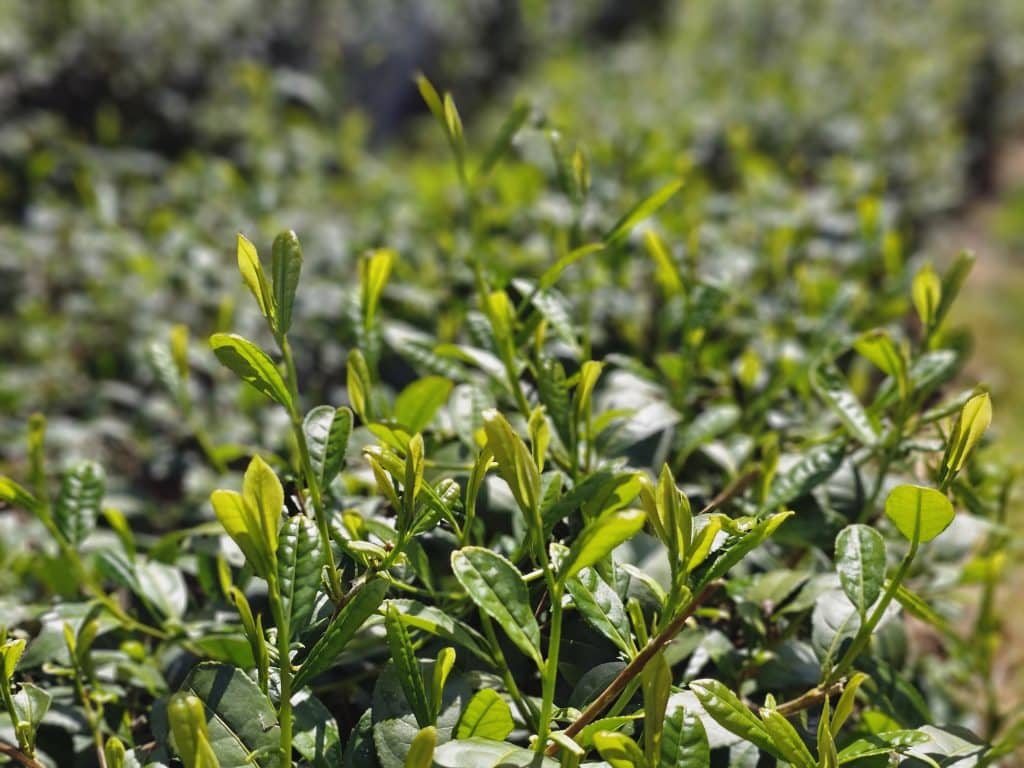
The two varieties of tea camellia
The tea plant is native to a vast area in the south-east of the Himalayas. There are two main varieties of tea plant: Camellia sinensis var. Sinensis and Camellia sinensis var. Assamica.
The assamica variety is the most widespread in the world: it is used to make black tea for everyday consumption, as well as the most prestigious dark teas.
The sinensis variety is used for all types of tea. It is the basis, for example, of most green teas from China and Japan, and blue teas from Taiwan.
Monocultivar teas and blends
Just as wine can be produced from different grape varieties, tea can be grown from different cultivars; around 2,000 cultivars have been identified worldwide: around fifty are used to produce ‘mono-cultivar’ teas, which are the most highly regarded. Blends are generally used for everyday teas.
Where and how is tea grown?
The tea tree is emblematic of the Far East, where tea is a veritable institution. As well as being a pleasure to drink, it is a vehicle for spirituality and social harmony.
China is the world’s leading tea-producing country, with nearly three million tonnes produced annually, accounting for almost half of global output. It produces all types of tea, whereas other producing countries often specialise in one type of tea: India, Kenya, Sri Lanka and Turkey for black tea; Japan and Korea for green tea; Taiwan for blue tea, etc.
Tea plants can thrive in a wide range of climatic conditions, from temperate to semi-tropical. They prefer well-drained acidic soil, high humidity and regular rainfall. Once rooted, they will be hardy and self-sufficient: their roots can penetrate rocks up to six metres deep to draw on the water and mineral resources they need for their growth.
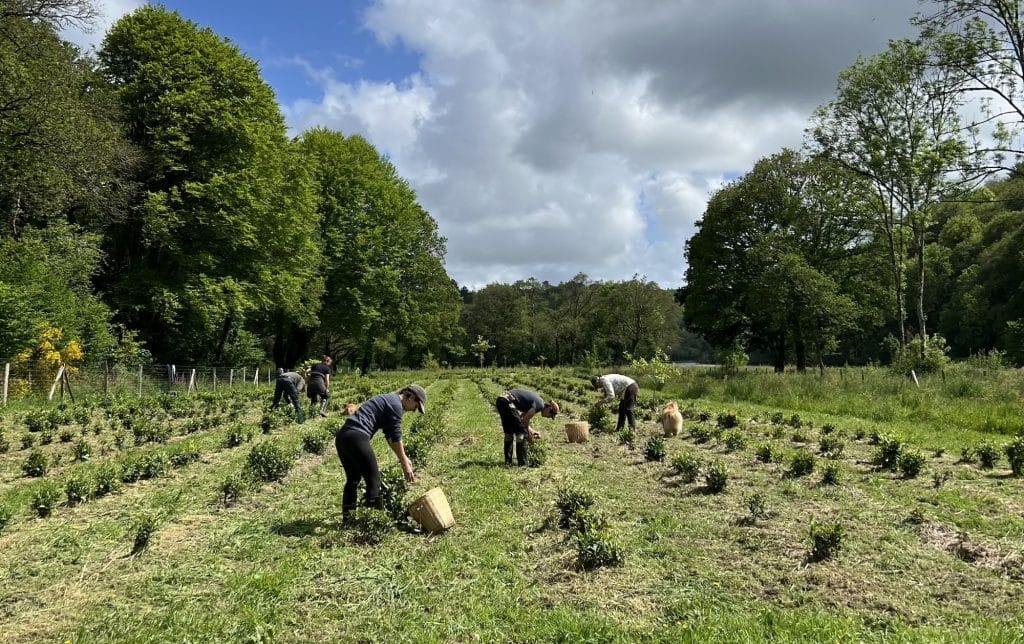
Types of tea and their specific characteristics
The colour of tea is not defined by the colour of the liquor (infusion, colour in the cup) or by the type of tea plant.
Black tea, blue tea or oolong tea, white tea or green tea: all teas come from the Camellia sinensis tree, and only the production methods differ: oxidation, withering, drying, rolling.
- Black tea (known as red tea in China because of the colour of its liquor) is defined by leaves that have undergone complete oxidation before being dried.
- Green tea, on the other hand, is not oxidised – its leaves, once plucked, undergo fixation to stop oxidation.
- White tea is not oxidised: the leaves undergo minimal handling, hence its reputation as the ‘lazy man’s tea’; they are simply withered and dried.
- Blue tea, also known as oolong, is a semi-oxidised tea: a great deal of handling (wilting in the light, repeated stirring) means that the tea is only oxidised at the edges of the leaf. It is therefore not a green tea that is insufficiently fixed or a black tea that is insufficiently oxidised, but a tea that has undergone a specific, long and complex transformation.
- Dark tea, known as ‘black’ tea in China, undergoes a process similar to that of green tea; it is then post-fermented in the atmosphere by the action of micro-organisms, and is most often compacted in the form of cakes, bricks, etc.
- Yellow tea undergoes a light oydation in a humid atmosphere; in China, it is made only from buds, which makes it a rare and expensive tea; the ‘yellow’ colour is considered imperial, which adds to its prestige.
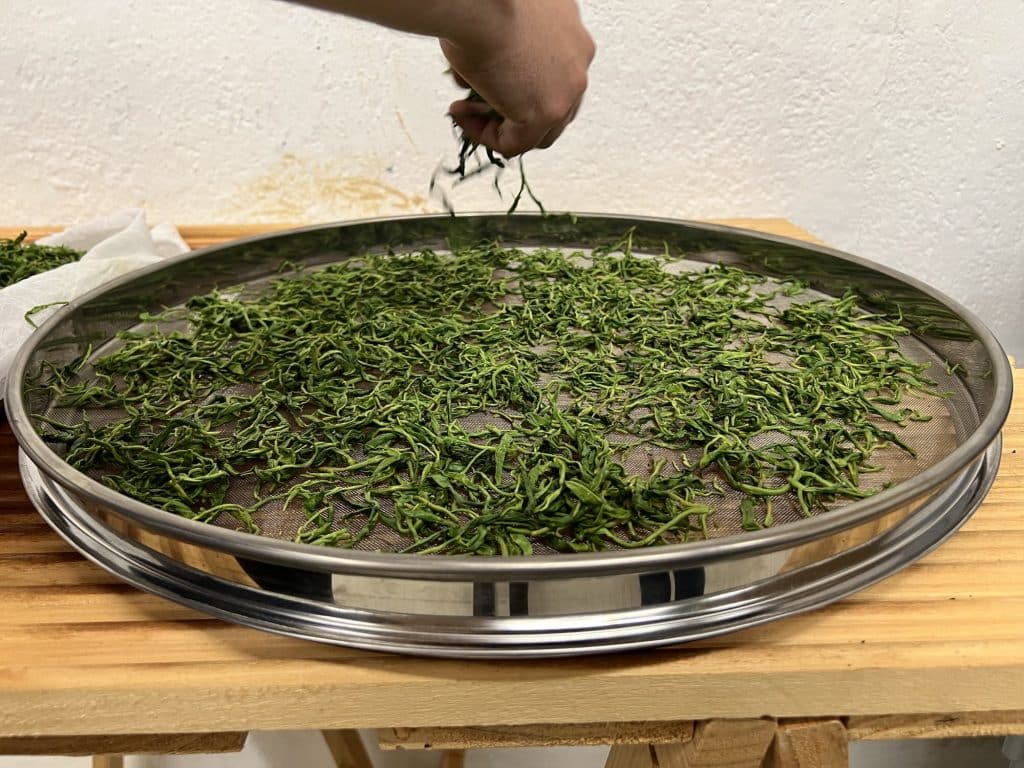
Where did the initiative to grow tea in France come from?
After attempts in Vietnam and French Guiana, the first tea plantations appeared in France in the 1950s on Reunion Island.
The history of Breton tea
Tea bushes appeared in Brittany in the 19th century, particularly among the collections of Camellias on fine Breton estates.
The idea of growing and producing tea in France was first mooted in 1838 when the botanist Jean Baptiste Antoine Guillemin, commissioned by King Louis-Philippe, went on a mission to Brazil to study the possibility of growing tea in France. He returned to France with 1,500 surviving tea plants (out of 3,000 shipped) and seeds: he recommended starting experiments… in Brittany. Experiments were undoubtedly carried out, but the project seems to have been abandoned following Guillemin’s early death in 1841.
The project of Denis and Weizi Mazerolle, a couple who have been passionate about tea for 40 years
Denis, an engineer by training, has a passion for tea, which he discovered in China in 1983. Weizi, his partner, is of Chinese origin and tea is part of her culture. After travelling the world discovering tea plantations with artisanal productions, this couple of passionate amateurs acquired various tea plants in 2006 with the aim of experimenting with a small personal production.
Denis and Weizi started making tea in 2010. Convinced of the potential of this crop in Brittany, they expanded their plantation by reproducing old Breton tea plants and importing new cultivars from different countries (China, Japan, Georgia, Nepal, Taiwan, etc.).
From the outset, the idea was to offer organic tea grown in an eco-responsible way, and to make it an exceptional product of the French terroir. The choice of location for the plantations was not insignificant either: Brittany’s mild oceanic climate, its granite relief and soils and the hygrometric conditions of the Blavet Valley proved ideal for growing tea.
The first year, when the project was launched in 2006, part of the tea plantation was eaten by deer, but year after year the plantation grew to several tens of thousands of tea bushes over almost four hectares.
Ecological aspects of tea-growing
Filleule de Fées’ approach is responsible, educational and ecological: it is possible to produce organically grown tea on French soil while respecting the environment and biodiversity… practices that are rare in traditional tea-producing countries.
The Filleule des Fées camellias grow without the addition of chemical fertilisers or pesticides, drawing on the acid granite soil of the Blavet valley.
The young shoots (buds and young leaves) are picked by hand from April onwards, taking care not to stress the plant.
Every year, the biomass harvested is compensated for by adding straw, wood shavings and compost collected nearby.
Practical training courses are regularly organised to spread the know-how developed by Denis & Weizi and enable professionals and amateurs alike to grow and produce their own tea.
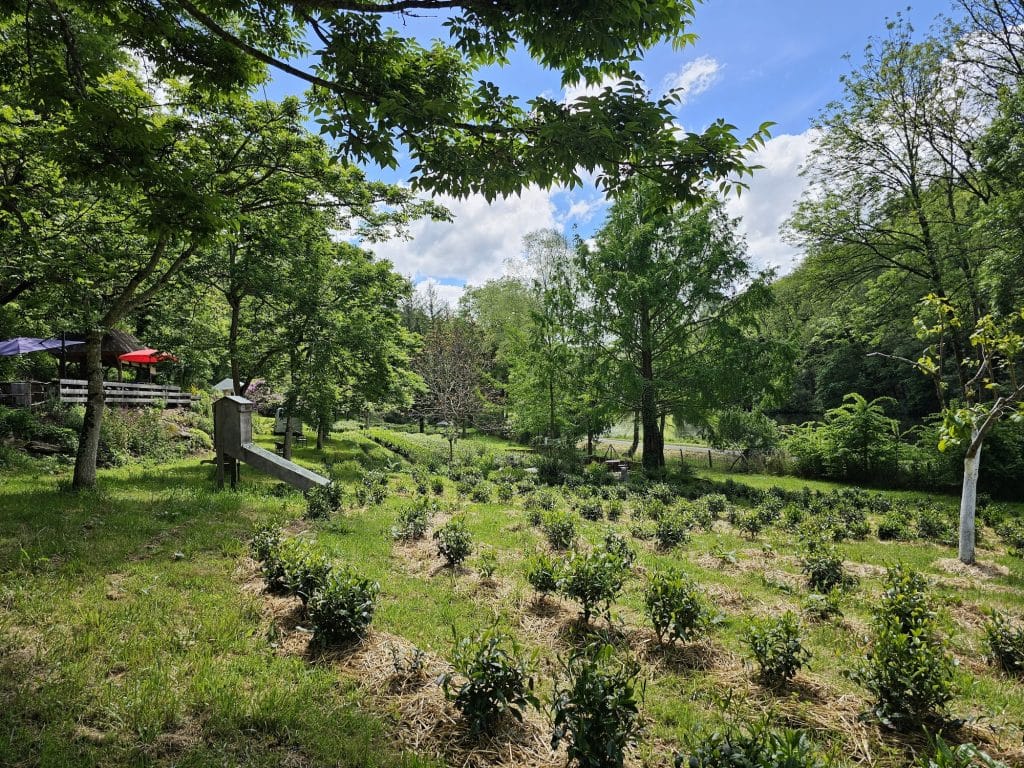
Which teas are produced in mainland France?
Filleule des Fées produces black, white, green and blue teas using traditional methods. Some teas, known as ‘mono-cultivars’, are produced from a single cultivar, rather like a single-varietal wine. This is particularly true of green and blue teas. Others are a blend of several cultivars.
Production at Filleule des Fées remains limited: despite the development of the plantation, only a small proportion of the tea bushes have reached maturity. The quality sought, combined with an eco-responsible approach, limits the yield considerably.
There are an increasing number of tea plantations in France (in Brittany, Normandy and the Pyrenees). Filleule des Fées has an ongoing exchange with the community of growers and supplies them with a large proportion of the Camellia sinensis plants, enabling them to start production with tea bushes suited to their environment and the tea they wish to produce.
During the summer, the Trébihan garden is open to the public, offering a tasting area and fun activities for all ages.
